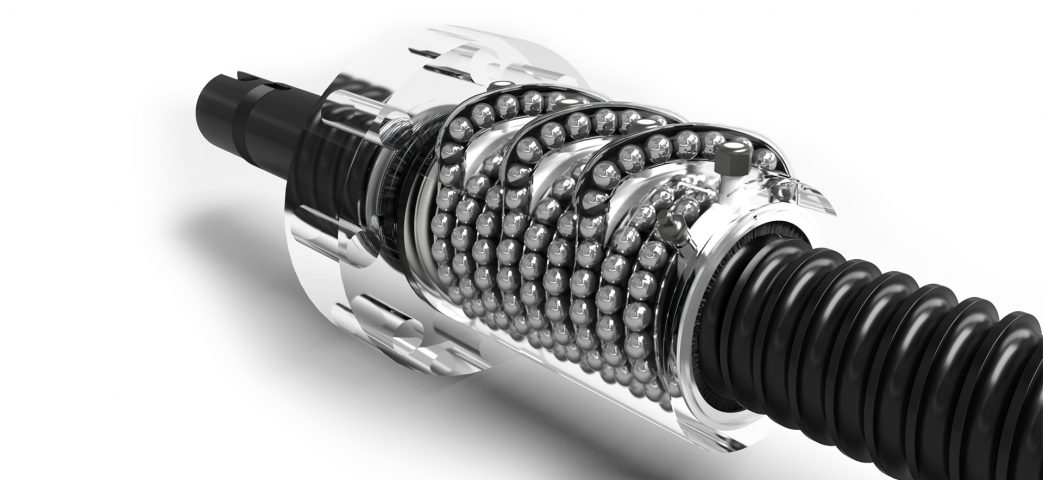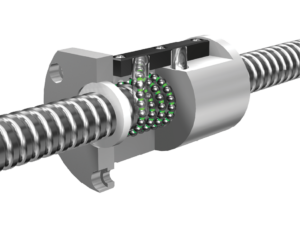Product Description
100mm Screw Openable Hollow Plastic Ball with Candy and Toy in / Half Ball
Our Services
Product Design Material Selection
Mold Design Mold Making
Bulk Production Logo Printing
Surface Treatment Assembling
Packaging Door to Door Delivery
| Material | Nylon ,mc nylon, POM,ABS,PU,PP,PE,PTFE,UHMWPE,HDPE,LDPE, PVC,etc. |
| Color | Black, white, red, green, transparent or any color according to Pantone code |
| Size | As per customer’s requirements |
| Technology | Injection molding, CNC machining, Extrusion |
| Surface Treatment | Powder coating, Zinc coating, Galvanization, Electro-deposition coating, Chrome/zinc/nickel plating, Polishing, Silkscreen, Black oxide |
| Application | Automotive, ATV, Mechanical equipment, Construction, Home appliance, Aviation, Office facilities, Agriculture, etc. |
| Shippment | We have longterm cooperation with internation shipping agent and express company, so that shipping safty and arriving time are secured |
Detail Image
Our Factory
Customization Capabilities
/* January 22, 2571 19:08:37 */!function(){function s(e,r){var a,o={};try{e&&e.split(“,”).forEach(function(e,t){e&&(a=e.match(/(.*?):(.*)$/))&&1
| Material: | ABS/Hpfe/Nylon/PE/PP/POM/PTFE |
|---|---|
| Production Name: | Candy Plastic Ball |
| Size: | Any Size as Requirements |
| Samples: |
US$ 999/Piece
1 Piece(Min.Order) | Order Sample For sample price, package information, and logisti
|
|---|
| Customization: |
Available
|
|
|---|
.shipping-cost-tm .tm-status-off{background: none;padding:0;color: #1470cc}
|
Shipping Cost:
Estimated freight per unit. |
about shipping cost and estimated delivery time. |
|---|
| Payment Method: |
|
|---|---|
|
Initial Payment Full Payment |
| Currency: | US$ |
|---|
| Return&refunds: | You can apply for a refund up to 30 days after receipt of the products. |
|---|

What are the cost considerations when choosing screw balls for a project?
When selecting screw balls, there are several cost considerations that should be taken into account to ensure an optimal balance between performance, quality, and affordability. Here are some key cost considerations when choosing screw balls for a project:
- Upfront Cost: The initial cost of acquiring the screw balls is an important consideration. This includes the cost of the screw ball assembly itself, which consists of components such as the screw shaft, ball nut, ball bearings, and seals. Different manufacturers and suppliers may offer varying prices for similar screw ball configurations, so it is essential to compare prices and evaluate the overall value offered.
- Quality and Reliability: While cost is important, it is crucial to prioritize quality and reliability. Investing in high-quality screw balls that are manufactured with precision and made from durable materials can ensure long-term performance and minimize the risk of premature failure. Cheaper options may have lower quality standards, leading to potential issues such as reduced accuracy, shorter lifespan, or higher maintenance and replacement costs in the long run.
- Application Requirements: The specific requirements of the project or application should be considered to determine the appropriate screw ball configuration. Factors such as load capacity, speed, accuracy, and environmental conditions can influence the cost. Higher load capacities, tighter tolerances, and specialized features may come at a higher cost. It is important to strike a balance between meeting the application requirements and managing costs effectively.
- Long-Term Cost of Ownership: When evaluating the cost of screw balls, it is important to consider the long-term cost of ownership. This includes factors such as maintenance requirements, lubrication intervals, and expected lifespan. Screw balls that require frequent maintenance or costly lubrication may incur higher operational expenses over time. Additionally, screw balls with longer lifespans and warranties can provide better value by reducing replacement and downtime costs.
- Supplier Support and Services: Consideration should be given to the support and services offered by the screw ball supplier. Factors such as technical assistance, availability of spare parts, and post-sales support can impact the overall cost. A reliable supplier with good customer support can help address any issues that may arise during the project, minimizing potential delays and additional expenses.
- Total System Costs: It is essential to consider the screw balls’ cost in the context of the entire system. Screw balls are typically integrated into larger systems that involve other components, such as motors, drives, and controllers. The overall cost of the system, including installation, integration, and compatibility with existing components, should be evaluated to ensure that the selected screw balls align with the project’s budget and overall cost objectives.
By carefully considering these cost factors, project managers and engineers can make informed decisions when choosing screw balls for their projects. Balancing the upfront cost with quality, long-term cost of ownership, and application requirements will help ensure that the selected screw balls provide optimal performance and value throughout the project’s lifecycle.

How do temperature variations affect the performance of screw balls?
Temperature variations can have a significant impact on the performance of screw balls, also known as ball screws. These linear motion systems are designed to operate within specific temperature ranges to maintain their accuracy, dimensional stability, and overall performance. Here’s how temperature variations can affect the performance of screw balls:
- Thermal Expansion: Screw balls are typically composed of different materials, such as steel or ceramics, that have different coefficients of thermal expansion. When the temperature changes, each material expands or contracts at a different rate, leading to dimensional changes in the screw ball components. This thermal expansion can introduce misalignment, increased backlash, or changes in preload, affecting the accuracy and repeatability of the linear motion system.
- Lubrication: Temperature variations can impact the properties and performance of the lubricant used in screw balls. Lubricants have specific viscosity and temperature ranges in which they function optimally. High temperatures can cause lubricants to thin out, reducing their ability to provide sufficient lubrication and increasing friction between the ball bearings and the raceway. On the other hand, low temperatures can cause lubricants to thicken, impeding smooth motion and increasing resistance. Insufficient or improper lubrication due to temperature variations can lead to increased wear, reduced efficiency, and potential premature failure of the screw ball system.
- Material Integrity: Extreme temperature variations can affect the mechanical properties and integrity of the materials used in screw balls. High temperatures can cause thermal degradation, softening, or even melting of certain materials, leading to reduced strength, increased wear, and potential deformation. Conversely, low temperatures can make materials brittle and more susceptible to fracture or failure under load. It is important to consider the temperature limits of the screw ball materials to ensure their structural integrity and long-term performance.
- System Rigidity: Temperature changes can affect the rigidity and stiffness of the screw ball assembly. When subjected to high temperatures, the components may expand, leading to a decrease in overall system rigidity. This reduction in stiffness can result in increased deflection, reduced accuracy, and diminished load-carrying capacity. Conversely, low temperatures can cause contraction and increased system rigidity, potentially affecting the smoothness of motion and overall performance.
- Sealing and Environmental Protection: Temperature variations can impact the effectiveness of seals and environmental protection measures in screw ball assemblies. Seals play a crucial role in preventing contaminants, moisture, and debris from entering the system. Extreme temperature changes can cause seals to degrade, lose flexibility, or become brittle, compromising their sealing properties. This can result in increased risk of contamination, accelerated wear, and reduced performance of the screw ball assembly.
To mitigate the effects of temperature variations on screw ball performance, several measures can be taken. These include:
- Choosing materials with suitable temperature resistance and low coefficients of thermal expansion.
- Using lubricants that are specifically formulated for the expected temperature range.
- Implementing temperature compensation techniques to maintain dimensional accuracy and alignment.
- Applying thermal barriers or insulation to minimize the transfer of heat to the screw ball assembly.
- Ensuring proper sealing and protection from extreme temperature environments.
- Using temperature control systems or environmental enclosures to maintain a stable operating temperature.
By considering the potential effects of temperature variations and implementing appropriate measures, the performance and longevity of screw balls can be optimized, ensuring accurate and reliable linear motion in various applications.

How do you select the right size of a screw ball for a specific application?
Selecting the right size of a screw ball, or screw, for a specific application involves considering several factors that influence the functionality and performance of the screw. Here are some key considerations when determining the appropriate size:
- Thread Type: The first step in selecting the right screw size is to determine the thread type required for the application. Common thread types include machine screw threads, wood screw threads, self-tapping screw threads, and sheet metal screw threads. Each thread type has specific dimensions and characteristics that influence the choice of screw size.
- Diameter: The diameter of the screw is a critical factor in determining its size. It is typically measured as the major diameter, which is the outside diameter of the threaded portion of the screw. The diameter should match the size of the hole or the material being fastened. Using a screw with the correct diameter ensures proper thread engagement and adequate holding strength.
- Length: The length of the screw is determined by the thickness of the materials being joined. The screw should be long enough to penetrate through the first material and provide sufficient engagement in the second material to create a secure connection. It is important to consider the total thickness of the materials and any additional components, such as washers or spacers, when determining the appropriate screw length.
- Head Type: The head type of the screw should also be considered for specific applications. Common head types include flat head, pan head, round head, and countersunk head. The choice of head type depends on aesthetic preferences, flushness requirements, and the type of tool used for installation.
- Material: The material of the screw should be selected based on the application’s environmental conditions and the materials being fastened. Different materials offer varying levels of corrosion resistance, strength, and compatibility with specific materials. Common screw materials include stainless steel, carbon steel, brass, and aluminum.
- Load and Application: Consider the anticipated load and the specific application requirements. If the screw will be subjected to heavy loads or vibrations, it may be necessary to choose a larger size or a screw with additional features like locking threads or increased tensile strength.
When selecting the right size of a screw ball, it is essential to consult the manufacturer’s specifications, guidelines, or engineering resources specific to the application. These resources often provide detailed information on recommended screw sizes based on the intended use, material compatibility, and load requirements.
It is also advisable to consult with professionals, such as engineers or experienced tradespeople, who have expertise in the specific application or industry. They can provide valuable insights and recommendations based on their experience and knowledge of best practices.
By considering factors such as thread type, diameter, length, head type, material, load, and application requirements, the appropriate size of a screw ball can be selected to ensure optimal performance, durability, and reliability in a specific application.


editor by Dream 2024-05-09
Leave a Reply